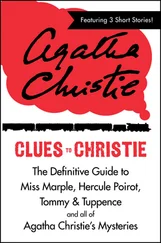And ‘this young kid’ had every right to be very excited about the part he played on ‘I Pity the Fool’, which, despite his misgivings, was a sensationally great record that should have been a hit; this was thanks in no small part to Jimmy Page adding searing, hard-rock guitar, like something Mick Green could have provided for the Pirates.
‘I Pity the Fool’ might have flopped, but Talmy produced breakthrough singles from a pair of acts that would become two of the biggest UK groups of the 1960s: ‘You Really Got Me’, the Kinks’ third 45, and the Who’s ‘I Can’t Explain’. Page played rhythm guitar on a version of the latter track.
‘Because Shel wasn’t sure I could play a solo, he asked his favourite session guitarist, Jimmy Page, to sit in,’ wrote Pete Townshend in his autobiography. ‘And because our band had rehearsed the song with backing vocals in Beach Boys style, but not very skilfully, Shel arranged for three male session singers, the Ivy League, to chirp away in our place. Shel Talmy got a good sound, tight and commercial, and although there was no guitar feedback, I was willing to compromise to get a hit.’
In Guitar Masters: Intimate Portraits by Alan DiPerna, Townshend referred to Page as ‘a friend of mine’. The guitarists certainly had something in common: a fling with Anya Butler, the beautiful – and older – assistant to Who co-manager Chris Stamp. Townshend was initially puzzled by Page’s presence at the session: ‘I said to Jimmy, “Well, what are you doing here?” He said, “I’m here to give some weight to the rhythm guitar. I’m going to do the guitar on the overdubs.” And I said, “Oh, great.” And he said, “What are you going to play?” “A Rick 12,” I told him. And he said, “I’ll play a …” Whatever it was. It was all very friendly. It was all very convivial.’
And on ‘Bald Headed Woman’, the B-side of ‘I Can’t Explain’, it was Page who played the fuzzbox licks. On the liner notes to the Who’s Two’s Missing compilation album, Who bassist John Entwistle said: ‘The fuzz guitar droning throughout is played by Jimmy Page. The reason being, he owned the only fuzzbox in the country at that time.’
Entwistle was not exactly correct. Gibson guitars had put a fuzz-tone pedal into production in 1962, giving it the brand name of ‘Maestro Fuzz-Tone FZ-1’. Although in limited supply, the devices, imported from the US, could be found from time to time in London’s more select musical equipment stores, and it was from one of these that Page had acquired his gadget.
Like many technological developments, the origins of the fuzzbox and the dirty edge it added to a guitar’s sound – which Page would employ to his maximum advantage and could be heard to its defining fullest when played by Keith Richards on the Rolling Stones’ ‘Satisfaction’ – were accidental. In 1951 Jackie Brenston and his Delta Cats – actually Ike Turner’s Kings of Rhythm – had hit the number one slot in the US rhythm and blues chart with ‘Rocket 88’. A distinctive feature of ‘Rocket 88’ was the growling sound of Willie Kizart’s guitar. On his way from Clarksdale, Mississippi, to Sam Phillips’s Sun Studio in Memphis in 1951 to record the tune, Kizart’s amplifier had fallen from his car while a tyre was being replaced. Endeavouring to repair the resulting damage to the speaker cone, the guitarist stuffed it with paper: the marginally distorted sound that resulted became a feature of the ‘Rocket 88’ single, which is often cited as one of the first rock ’n’ roll records. From then on, guitarists sought out the means to deliver a similar grimy sound, the likes of Link Wray – who would poke holes in his loudspeaker – and Buddy Guy consciously damaging their amps to replicate such a tone. And in 1961 the great country singer Marty Robbins’s ‘Don’t Worry’ single hit number three in the US national charts, largely courtesy of his guitarist Grady Martin’s muttering instrument being played through a faulty amplifier. Martin soon put out his own single, ‘The Fuzz’, thus bestowing the malfunction with a semi-official term.
In Los Angeles a radio-station technician developed an electronic device to create such an effect for producer Lee Hazelwood, who employed it on Sanford Clark’s ‘Go On Home’ 45 in 1960. And in the same city, super session player Orville ‘Red’ Rhodes, who would become a member of the celebrated Wrecking Crew and was also an electronics whizz, developed a similar device, which was utilised by fellow Wrecking Crew guitarist Billy Strange on Ann Margret’s ‘I Just Don’t Understand’. In turn this led to Strange employing Rhodes’s invention with the instrumental surf band the Ventures, a kind of US version of the Shadows, on their late-1962 release ‘The 2,000 Pound Bee’. It was this tune especially that had come to the attention of Page; anxious to replicate its juddering sound, he had purchased his own Maestro Fuzz-Tone.
Yet it was not entirely to his satisfaction. Luckily, he already knew someone who could assist him with this. Roger Mayer was a friend from the Epsom music scene. By 1964 he was working for the Admiralty Research Laboratory in Teddington, in the Acoustical Analysis section, having developed into something of an electronics boffin. And their friendship persisted: Page and Mayer would visit each other’s homes to listen to American records. ‘Jimmy came to me,’ said Mayer, ‘when he got hold of the Maestro Fuzz and said, “It’s good but it doesn’t have enough sustain … it’s a bit staccato.” I said, “Well, I’m sure we can improve on that.” That conversation spurred me to design my first fuzzbox.’
‘I suggested that Roger should try to make something that would improve upon the distortion heard on “The 2,000 Pound Bee” by the Ventures,’ said Page. ‘He went away and came up with the first real good fuzzbox … the first thing that really generated this wonderful sustain.’
Running off a 6-volt battery, Mayer’s fuzzbox was constructed within a custom-made casing, which contained controls for gain and biasing along with a switch that would modify the tonal output. ‘Right from square one,’ said Mayer, ‘Pagey and I wanted something that sustained a lot, but then didn’t start jittering as it went away. One of the things that became very, very apparent early on was that you didn’t want nasty artefacts. It’s very easy to design a fuzzbox – anybody can do it – but to make one sound nice and retain articulation in notes, now that’s something else.’
Page’s part in the Kinks’ career is more cloudy. Although it has often been claimed that he played the iconic solo on ‘You Really Got Me’, this is not the case. ‘Jimmy did play rhythm on the first Kinks LP, and certainly did not play lead on “You Really Got Me”, which preceded the LP by several weeks, or anything else for that matter. I only brought him in to play rhythm because at the time Ray wanted to concentrate on his singing,’ said Shel Talmy. In fact, Page had already played acoustic 12-string guitar on ‘I’ve Been Driving on Bald Mountain’ and ‘I’m a Lover Not a Fighter’, on the Kinks’ eponymously titled debut album. (In 1965 Page played the solo on an instrumental version of ‘You Really Got Me’; almost identical to Dave Davies’s original guitar part, it was included on an instrumental album by the Larry Page Orchestra entitled Kinky Music .)
‘My presence at their sessions was to enable Ray Davies to wander around and virtually maintain control of everything, without having to be down in the studio all the time,’ said Page later. ‘Ray was producing those songs as much as Shel Talmy was … more so, actually, because Ray was directing them and everything. At one point, there were even three guitars playing the same riff.’
Читать дальше












